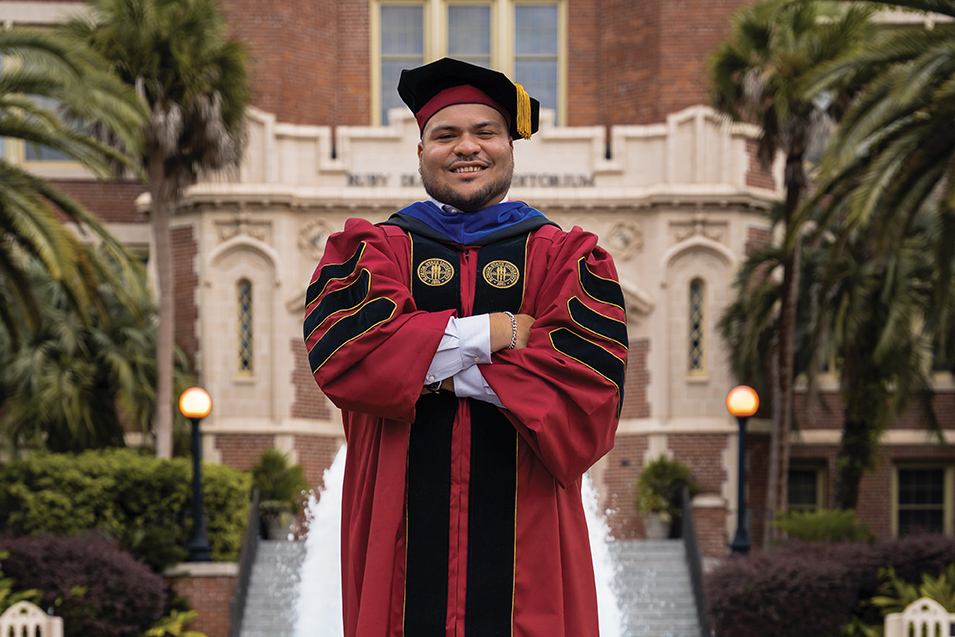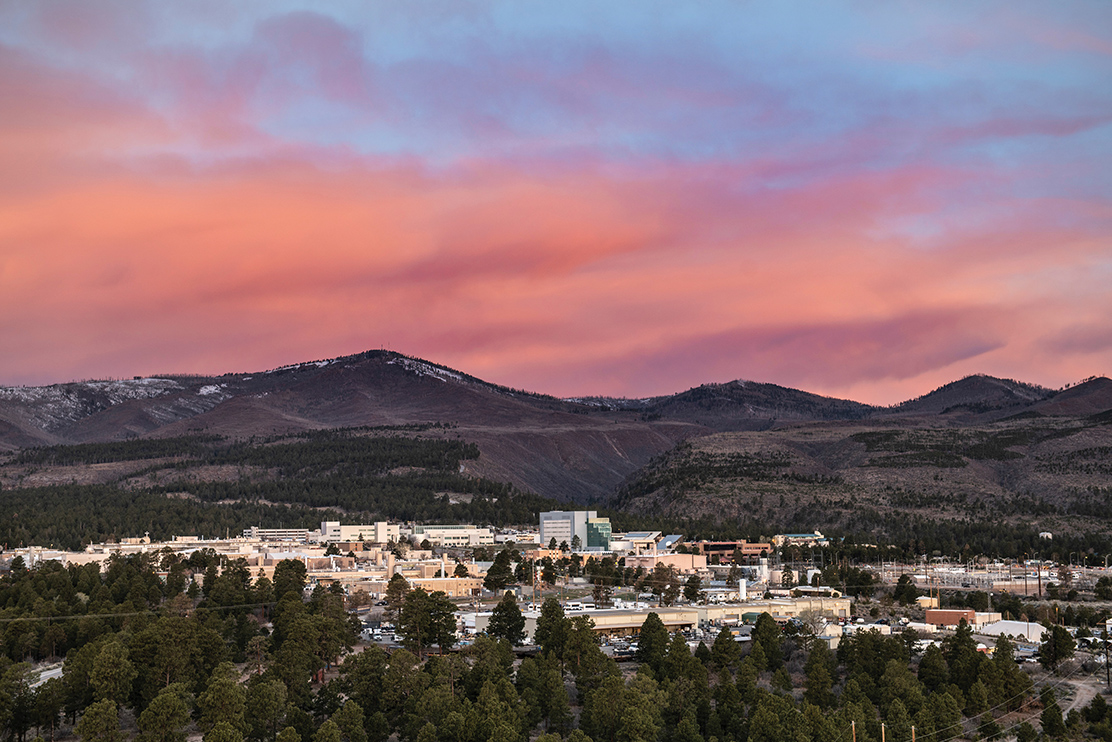Star Power
Alumnus Jesus Perello Izaguirre combines astronomy, nuclear physics to strengthen national security

Florida State University physics alumnus Jesus Perello Izaguirre would love to tell you about his work, but he can’t say much — it’s a matter of national security.
About 35 miles northwest of Santa Fe, in the presence of New Mexico’s breathtaking views, Perello, a nuclear astrophysicist, builds and maintains space-based neutron and radiation detectors that monitor international compliance with nuclear treaties as part of Los Alamos National Laboratory’s Intelligence and Space Research Division.
“I calibrate the detectors, analyze the signals they’re putting off, and account for performance degradation due to radiation. I’m also developing an Earth-based neutron detector system for nuclear emergency response applications,” Perello said. “If some device or material is found, this detector can look at the distribution of neutron energies to give us an idea of what material we’re looking at, such as whether or not it is special nuclear material.”
Perello has collaborated with fellow physicists, engineers, chemists, and other scientists to develop international nuclear safeguards and further the science of nuclear nonproliferation at Los Alamos since joining the lab as a postdoctoral research scientist after earning his Ph.D. from FSU’s Department of Physics in 2021.

“I’d been told by many peers while earning my bachelor’s at Florida International University that FSU would be a great fit for graduate studies, especially with access to a nuclear accelerator on site, but I didn’t think I was good enough to be admitted until I spoke with the bridge program coordinator at FSU,” Perello said.
The American Physical Society, or APS, Bridge Program increases the number of underrepresented minority students pursuing doctoral degrees in physics by matching students with faculty members working in their research area, and this mentorship continues throughout their studies.
“Jesus thoroughly impressed us with his enthusiasm for nuclear physics and his determination to succeed in a graduate program. His undergraduate nuclear physics research experience at FIU prepared him well for the transition to our graduate program,” said Simon Capstick, professor of physics and one of two bridge program site leaders at FSU when Perello was admitted.
FSU was among the first institutions to receive funding from APS in 2014 to develop bridge programs. Bridge Fellows receive full stipend and tuition support to conduct research through physics laboratories. Thanks to funding from the College of Arts and Sciences, fellows are not assigned teaching duties for their first year, allowing them to dive deeply into coursework and research.
“We’re thankful to be able to offer these opportunities to highly talented students who would otherwise not have gone on to graduate school to pursue a doctorate in physics at FSU or other physics Ph.D. programs,” Capstick said.
At FSU’s John D. Fox Superconducting Linear Accelerator Laboratory, part of the U.S.’s Center for Excellence in Nuclear Training and University-Based Research, or CENTAUR, Perello worked alongside associate professor of physics Sergio Almaraz-Calderon to better understand observations made by the NASA Fermi gamma-ray telescope orbiting in space that detected radioactive elements throughout the galaxy.
“Jesus helped develop a neutron detector system and measured important nuclear reactions in order to answer general questions such as how different elements in the universe are formed and what processes create them,” Almaraz-Calderon said. “He’s both easy-going and passionate about contributing to the lab, always wanting to help out and excited to discuss his research.”
This collaborative spirit keeps the Fox lab on the cutting edge of nuclear physics research as graduate students run experiments 24 hours a day, 7 days a week. Perello absorbed as much knowledge as he could from mentor Almaraz-Calderon and professors of physics Jorge Piekarewicz and Ingo Wiedenhöver, both of whom are APS fellows and distinguished leaders in the pursuit of novel nuclear physics discoveries.
“My work focused on a radioactive isotope of aluminum called aluminum-26 that has a lifetime of around 700,000 years. Since we’re still detecting it in the galaxy, it’s hypothesized the isotope is created and released during star explosions such as core-collapse supernovae and classical novae,” Perello said. “Using the neutron detector systems we developed, we studied the reactions that occur during these star explosions to better understand how elements are created and destroyed in these processes.”
While always drawn to the cosmos, Perello’s path to a career in physics wasn’t necessarily written in the stars. Now, he can’t fathom a better fit.
“I just wanted to better understand the universe,” Perello said. “Pursuing physics has answered so many of my personal questions, and now, I’m doing research that has major implications for the security of our country and the world. If labs like Los Alamos aren’t building systems to detect detonations in space or determine if materials found on Earth can be used for weapons, it could be catastrophic — I remind myself of this when I get caught up in the science side of my work.”
McKenzie Harris is a two-time FSU alumna who earned a master’s degree from the College of Communication and Information in 2022 and a bachelor’s degree from the Department of English in 2020.

